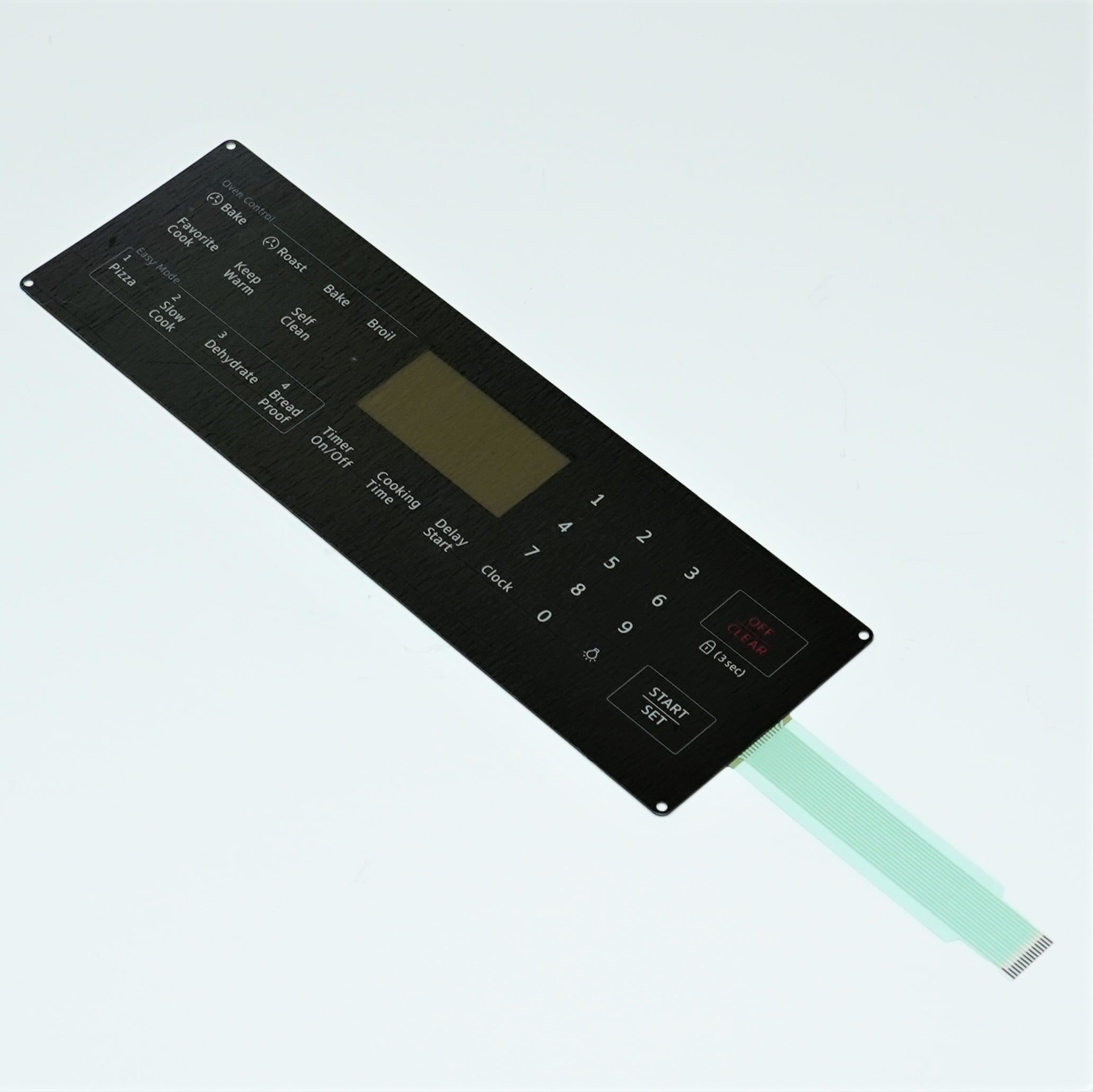Membrane Switch: A Comprehensive Guide to Its Uses and Applications
Membrane Switch: A Comprehensive Guide to Its Uses and Applications
Blog Article
Recognizing Membrane Layer Switches: The Key to Trusted and resilient Controls

What Are Membrane Buttons?
Membrane layer switches are a sophisticated remedy in the realm of interface technology, integrating capability and layout flawlessly. These gadgets offer as an interface between individuals and electronic systems, integrating several components into a portable style. Typically built from flexible, thin layers of materials, membrane layer buttons are developed to respond to touch, enabling users to engage with machinery and digital tools successfully.
The primary elements of a membrane layer button consist of a published circuit layer, graphic overlay, and a spacer layer that stops unintended activation. The visuals overlay can be personalized to reflect brand identity or individual choices, improving visual appeals while guaranteeing use. Membrane layer switches are commonly used in different applications, consisting of clinical devices, customer electronic devices, and commercial tools, owing to their durability and resistance to environmental aspects such as dampness and dust.
One of the key benefits of membrane layer buttons is their capability to withstand deterioration, making them optimal for high-traffic atmospheres. Additionally, they are light-weight and call for very little area, permitting innovative styles in product development. Generally, membrane changes stand for a efficient and useful choice for contemporary digital user interfaces, marrying modern technology with user-centric design concepts.
How Membrane Layer Switches Over Job
The procedure of membrane layer switches hinges on a simple yet effective mechanism that translates individual input into electronic signals. These buttons contain multiple layers, generally consisting of a graphic overlay, a spacer layer, and a circuit layer. When an individual presses the button, the leading layer flaws, allowing a conductive aspect in the circuit layer to reach an equivalent conductive pad on the bottom of the visuals overlay. This call shuts the circuit and sends a digital signal to the tool, suggesting that the switch has been activated.
The design of membrane buttons can differ, however they frequently incorporate domes or tactile elements to give feedback to the customer, enhancing the overall experience - membrane switch. The products used in membrane layer switches, such as polyester or polycarbonate, add to their sturdiness and resistance to ecological factors, consisting of moisture and dust. In addition, the published circuits are normally encapsulated, which shields them from wear and tear over time.
Advantages of Membrane Buttons

In addition, membrane layer switches are known for their longevity. Created from durable products, they are resistant to dust, dampness, and physical wear, which considerably extends their lifespan contrasted to conventional mechanical buttons. This resilience makes them especially appropriate for high-traffic settings and applications requiring durability.
Another substantial benefit is the simplicity of cleaning and upkeep. The smooth surface of membrane changes reduces dirt buildup and is frequently invulnerable to spills, making them ideal for settings that require constant sanitization.
In addition, her response membrane buttons use a streamlined account, resulting in a thinner design that can be integrated into numerous devices without adding mass. This function not only improves the visual charm yet likewise adds to a much more ergonomic product design.
Applications of Membrane Buttons
Flexible and straightforward, membrane switches discover applications throughout a wide variety of markets, consisting of medical gadgets, consumer electronics, and industrial devices. In the medical area, these buttons are essential to gadgets such as analysis tools, patient monitoring systems, and mixture pumps, where reliability and simplicity of cleaning are vital. Their ability to maintain and stand up to severe settings functionality makes them excellent for such applications.

In customer electronic devices, membrane buttons are used in items like microwaves, washing equipments, and push-button controls - membrane switch. Their streamlined design enables for instinctive interface, improving the total customer experience while giving sturdiness and resistance to use and tear
Commercial tools additionally gains from membrane buttons, especially in control panels for machinery and automation systems. These switches use defense versus dirt and wetness, ensuring regular efficiency in difficult atmospheres. In addition, their customizable features enable manufacturers to customize them to particular functional requirements, enhancing performance and performance.
Selecting the Right Membrane Layer Switch
When picking a membrane layer button, it is vital to consider different elements that affect efficiency and viability for certain applications. The main factors my response to consider consist of ecological problems, responsive comments, toughness, and layout specs.
First, evaluate the operating setting; buttons subjected to dampness, chemicals, or severe temperatures call for details products to ensure long life and functionality. Next, examine the need for responsive comments. Depending upon user interaction, some applications might gain from a tactile action to validate activation, while others may favor a non-tactile design for aesthetic reasons.
Toughness is one more vital variable; membrane layer buttons must be designed to endure regular use, effects, and abrasion. Make certain the chosen button can endure the expected lifecycle, specifically in high-usage circumstances.

Conclusion
In verdict, membrane switches over serve as important components in the layout of sturdy and trustworthy control systems across different sectors. The adaptability of membrane layer changes enables for customized options that satisfy details operational demands, reinforcing their value in contemporary technology.
Membrane switches stand for a vital aspect of contemporary interface design, blending capability with resilience in various applications.Membrane switches are a sophisticated remedy in the realm of individual interface technology, integrating performance and style seamlessly. Typically created from flexible, thin layers of products, membrane buttons are created to react to touch, enabling customers to communicate with machinery and digital tools properly.
The design of membrane switches can vary, yet they frequently integrate domes or tactile elements to give responses to the individual, enhancing the general experience.In conclusion, membrane layer changes offer as essential elements in the layout of trustworthy and sturdy control systems across various industries.
Report this page